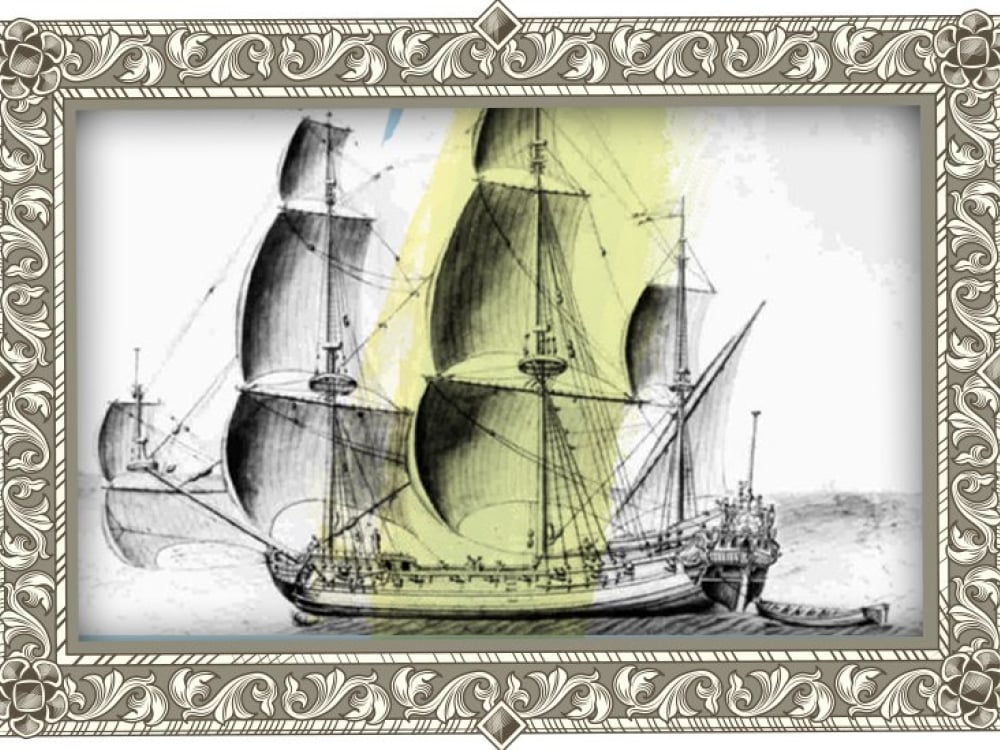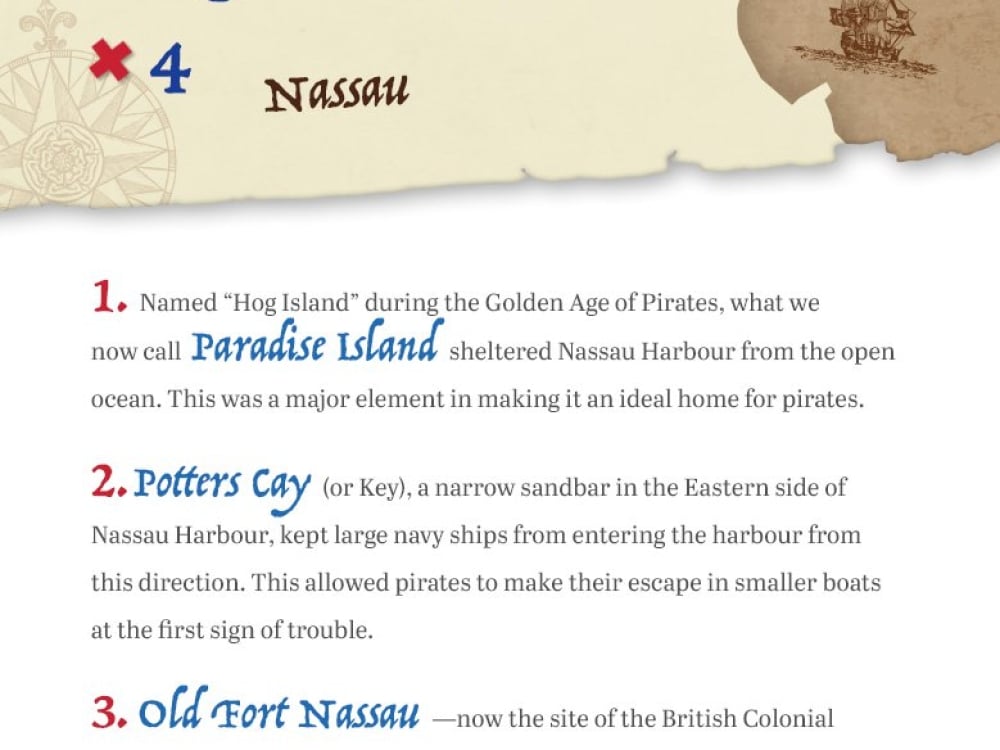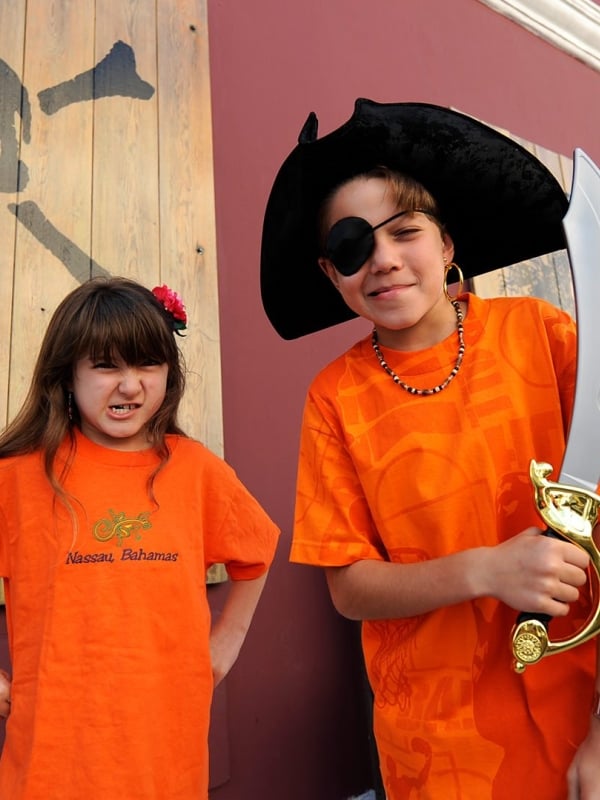A History Of Nassau's Pirates: A Pirate Republic

Henry Avery, the famous pirate captain whose arrival in Nassau inspired countless stories and legends, before he simply disappeared was in many ways the pirate that started it all.
Had Henry Avery been captured or killed, the history of piracy would likely be far different than we know it today. But after his disappearance in 1696, stories began to circle of his whereabouts. In fact, some believed he had returned to Madagascar and his “pirate kingdom,” where he and his men lived in luxury, using their treasure to build an opulent city of their own.
The year of Avery’s disappearance, a teenager named Edward Teach (or Thatch) was growing up in Bristol, England. Stories of Avery and his adventures around the world, and his limitless fortune, would have reached the young man as he began his own career as a sailor. Likely serving as a privateer during Queen Anne’s War, Teach became an accomplished seaman, and by 1716 he had found himself in Nassau.
We don’t know exactly when Teach was born, but historians estimate he would have been about 30 years old when he joined Benjamin Hornigold’s crew and became a pirate. Hornigold was by now an established pirate, and it was he who declared Nassau a “Pirate’s Republic.” He gave Teach command of a sloop (a small, fast, and agile ship) and the two captured several ships and began amassing a fleet.
Soon, Teach was one of the most powerful pirates in the Atlantic, and he and his 40-gun frigate Queen Anne’s Revenge were famous throughout the Caribbean. By now, Teach had come to be known by another name, the one we still call him today: Blackbeard.
With Nassau as their home base, Blackbeard and his fleet, now comprising more than 400 pirates under his command, sailed throughout the Atlantic, as far north as New England. He had earned his new name by growing out his large and imposing beard and hanging lit fuses down his face so smoke would rise past his wide and piercing eyes. The six pistols he hung across his chest like a bandolier were almost superfluous in such a foreboding spectacle.
This generation of pirates, unlike the tales of horror commonly heard in Henry Avery’s era, were known for treating their captives fairly. Doctors or surgeons were typically the only crew compelled by force to remain with the pirates. Often, when a navy ship was captured, much of the crew would freely join the pirate cause, seeking better treatment and fairer pay. Former slaves at one time made up almost 25% of the pirates at sea. The rest of the captured crew would usually be released, along with cargo not needed by the pirates.

Of course, there was nothing easy about being a pirate. As Colin Woodward notes in his book The Republic of Pirates, there was a saying at the time: “Those who would go to sea for pleasure would go to hell as a pastime.” It was a hard life, but one that promised freedom on the high seas, and the possibility of endless fortune.
Back in Nassau, more than 1,000 pirates were now calling the small-town home. They vastly outnumbered the 100 or so citizens of the town and it was, in all important aspects, a true Pirate’s Republic. They would often operate out of the Old Fort of Nassau and would wreck ships at the harbor’s entrance to further fortify the town from British and Spanish attacks.
Nassau was the perfect pirate’s base for several reasons. Under human power, small boats could outrun even the largest and fastest navy Ships of the Line—large, heavy and well-armed navy ships that would literally line up in battle to fire broadsides at the enemy—by rowing against the wind. Essentially, this meant Nassau had a built-in escape route, because the eastern entrance to the harbor was too shallow for anything but the smallest vessels to traverse. In addition, the surrounding islands had countless unexplored channels and coves where pirates could hide out after their raids.
In 1718, when he was just 38 or so years old, Blackbeard met his fate in North Carolina. He was killed during a fierce battle aboard the ship of Lieutenant Robert Maynard, who’d had his men hide below deck before being boarded by Blackbeard and his band. Blackbeard was taken by surprise and found himself locked in one-on-one combat with Maynard. Blackbeard managed to break Maynard’s sword before being attacked by Maynard’s men, who had surrounded the two captains as they fought.
Blackbeard was struck by at least five gunshots and stabbed at least 20 times. The most famous pirate in the Atlantic was now dead, and “Calico” Jack Rackham and Charles Vane, two of the other most feared pirates at sea, would soon meet their own violent ends, both captured and executed within the next two years.




